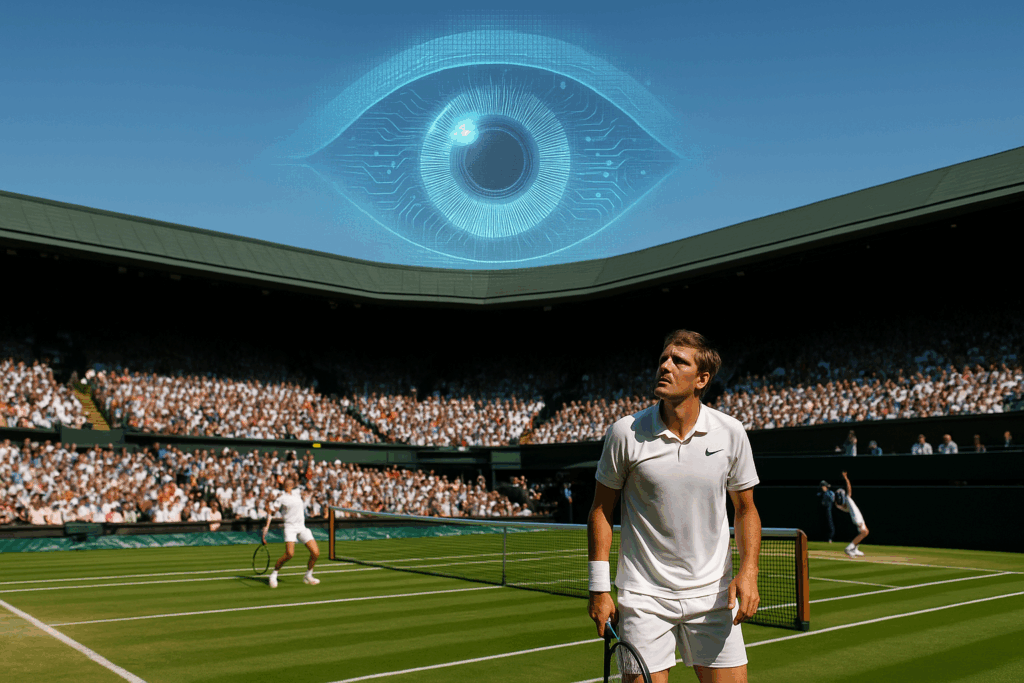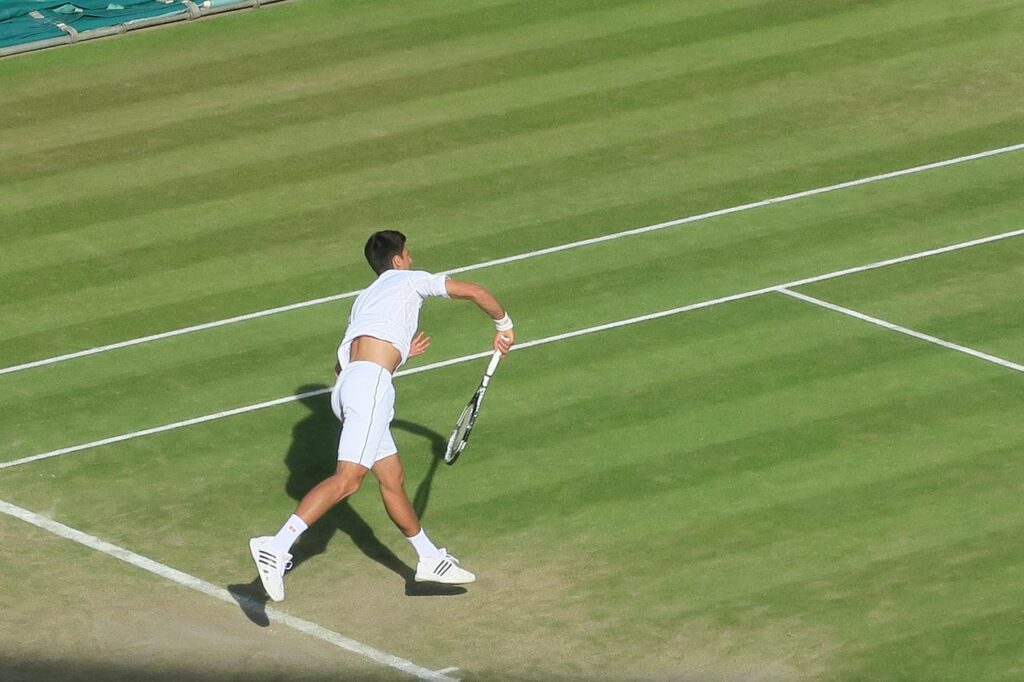No judges, no appeals, no fairness: Wimbledon 2025 shows what happens when AI takes over
AI made the calls at Wimbledon — and sparked global debate.

One of the world’s most iconic sporting events — and certainly the pinnacle of professional tennis — came to a close on Sunday, as Jannik Sinner lifted his first Wimbledon trophy and Iga Świątek triumphed in the women’s singles.
While the two new champions will remember this tournament for a lifetime, Wimbledon 2025 will also be recalled for another reason: the organisers’ decision to hand over crucial match decisions to AI-powered systems.
The leap into the future, however, came at a cost. System failures sparked considerable controversy both during the tournament and in its aftermath.
Beyond technical faults, the move disrupted one of Wimbledon’s oldest traditions — for the first time in 138 years, AI performed the role of line judge entirely. Several players have since pointed the finger not just at the machines, but directly at those who put them in charge.

Wimbledon as the turning point for AI in sport
The 2025 edition of Wimbledon introduced a radical shift: all line calls were entrusted exclusively to the Hawk-Eye Live system, eliminating the on-court officials. The sight of a human line judge, once integral to the rhythm and theatre of Grand Slam tennis, was replaced by automated sensors and disembodied voices.
Rather than a triumph of innovation, the tournament became a cautionary tale.
During the second round, Britain’s Sonay Kartal faced Anastasia Pavlyuchenkova in a match that became the focal point of AI criticism. Multiple points were misjudged due to a system error requiring manual intervention mid-match. Kartal was visibly unsettled; Pavlyuchenkova even more so. ‘They stole the game from me,’ she said — a statement aimed not at her opponent but the organisers.
Further problems emerged across the draw. The system’s imperfections were increasingly evident from Taylor Fritz’s quarterfinal, where a serve was wrongly ruled out, to delayed audio cues.
Athletes speak out when technology silences the human
Discontent was not confined to a few isolated voices. Across locker rooms and at press conferences, players voiced concerns about specific decisions and the underlying principle.
Kartal later said she felt ‘undone by silence’ — referring to the machine’s failure and the absence of any human presence. Emma Raducanu and Jack Draper raised similar concerns, describing the system as ‘opaque’ and ‘alienating’. Without the option to challenge or review a call, athletes felt disempowered.
Former line judge Pauline Eyre described the transformation as ‘mechanical’, warning that AI cannot replicate the subtle understanding of rhythm and emotion inherent to human judgement. ‘Hawk-Eye doesn’t breathe. It doesn’t feel pressure. That used to be part of the game,’ she noted.
Although Wimbledon is built on tradition, the value of human oversight seems to have slipped away.
Other sports, same problem: When AI misses the mark
Wimbledon’s situation is far from unique. In various sports, AI and automated systems have repeatedly demonstrated their limitations.
In the 2020 Premier League, goal-line technology failed during a match between Aston Villa and Sheffield United, overlooking a clear goal — an error that shaped the season’s outcome.
Irish hurling suffered a similar breakdown in 2013, when the Hawk-Eye system wrongly cancelled a valid point during an All-Ireland semi-final, prompting a public apology and a temporary suspension of the technology.
Even tennis has a history of scepticism towards Hawk-Eye. Players like Rafael Nadal and Andy Murray questioned line calls, with replay footage often proving them right.
Patterns begin to emerge. Minor AI malfunctions in high-stakes settings can lead to outsized consequences. Even more damaging is the perception that the technology is beyond reproach.
From umpire to overseer: When AI watches everything
The events at Wimbledon reflect a broader trend, one seen during the Paris 2024 Olympics. As outlined in our earlier analysis of the Olympic AI agenda, AI was used extensively in scoring and judging, crowd monitoring, behavioural analytics, and predictive risk assessment.
Rather than simply officiating, AI has taken on a supervisory role: watching, analysing, interpreting — but offering little to no explanation.
Vital questions arise as the boundary between sports technology and digital governance fades. Who defines suspicious movement? What triggers an alert? Just like with Hawk-Eye rulings, the decisions are numerous, silent, and largely unaccountable.
Traditionally, sport has relied on visible judgement and clear rule enforcement. AI introduces opacity and detachment, making it difficult to understand how and why decisions are made.
The AI paradox: Trust without understanding
The more sophisticated AI becomes, the less people seem to understand it. The so-called black box effect — where outputs are accepted without clarity on inputs — now exists across society, from medicine to finance. Sport is no exception.
At Wimbledon, players were not simply objecting to incorrect calls. They were reacting to a system that offered no explanation, human feedback, or room for dialogue. In previous tournaments, athletes could appeal or contest a decision. In 2025, they were left facing a blinking light and a pre-recorded announcement.
Such experiences highlight a growing paradox. As trust in AI increases, scrutiny declines, often precisely because people cannot question it.
That trust comes at a price. In sport, it can mean irreversible moments. In public life, it risks producing systems that are beyond challenge. Even the most accurate machine, if left unchecked, may render the human experience obsolete.
Dependency over judgement and the cost of trusting machines
The promise of AI lies in precision. But precision, when removed from context and human judgement, becomes fragile.
What Wimbledon exposed was not a failure in design, but a lapse in restraint — a human tendency to over-delegate. Players faced decisions without recourse, coaches adapted to algorithmic expectations, and fans were left outside the decision-making loop.
Whether AI can be accurate is no longer a question. It often is. The danger arises when accuracy is mistaken for objectivity — when the tool becomes the ultimate authority.
Sport has always embraced uncertainty: the unexpected volley, the marginal call, the human error. Strip that away, and something vital is lost.
A hybrid model — where AI supports but does not dictate — may help preserve fairness and trust.
Let AI enhance the game. Let humans keep it human.

Would you like to learn more about AI, tech and digital diplomacy? If so, ask our Diplo chatbot!

